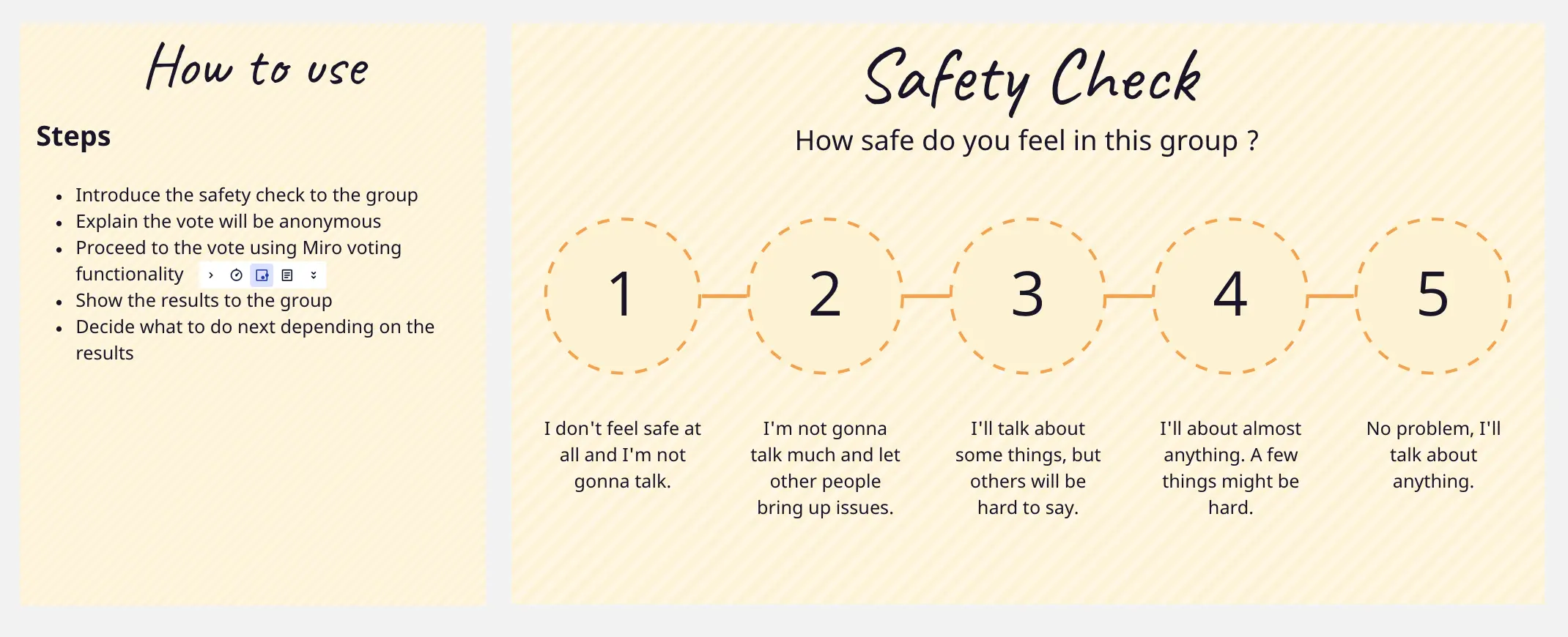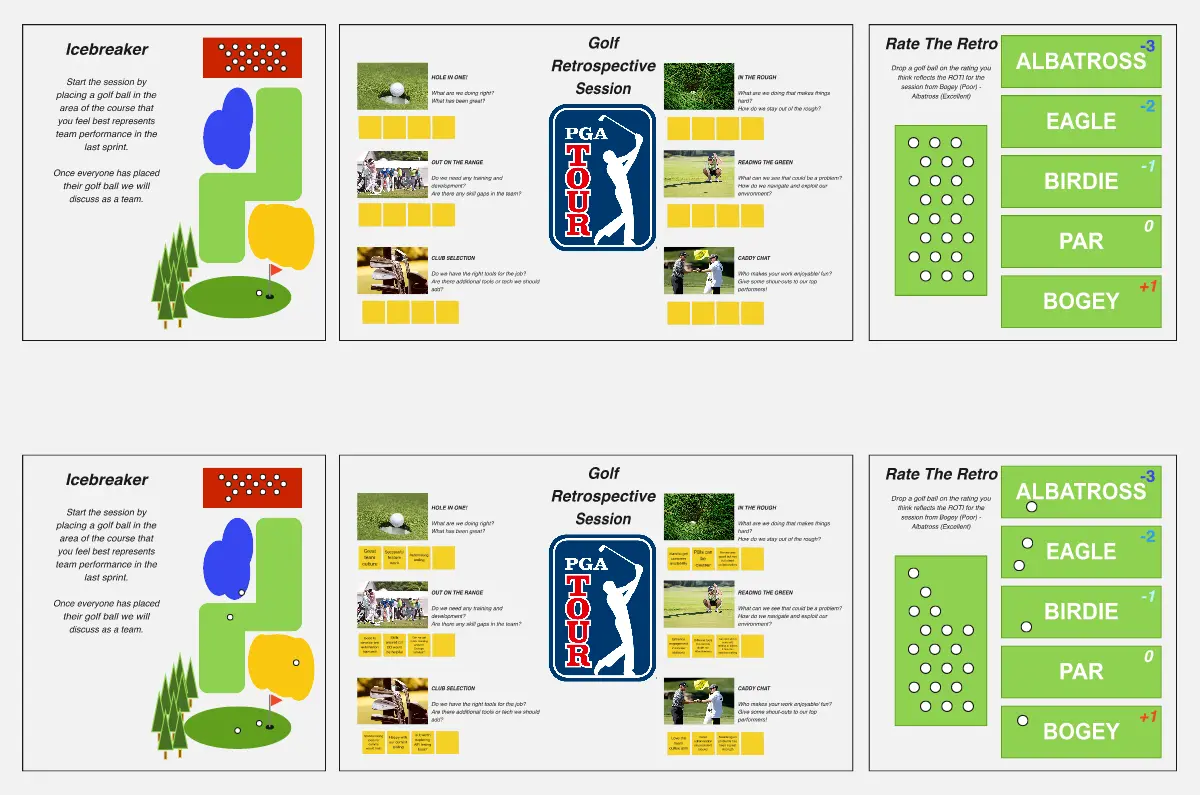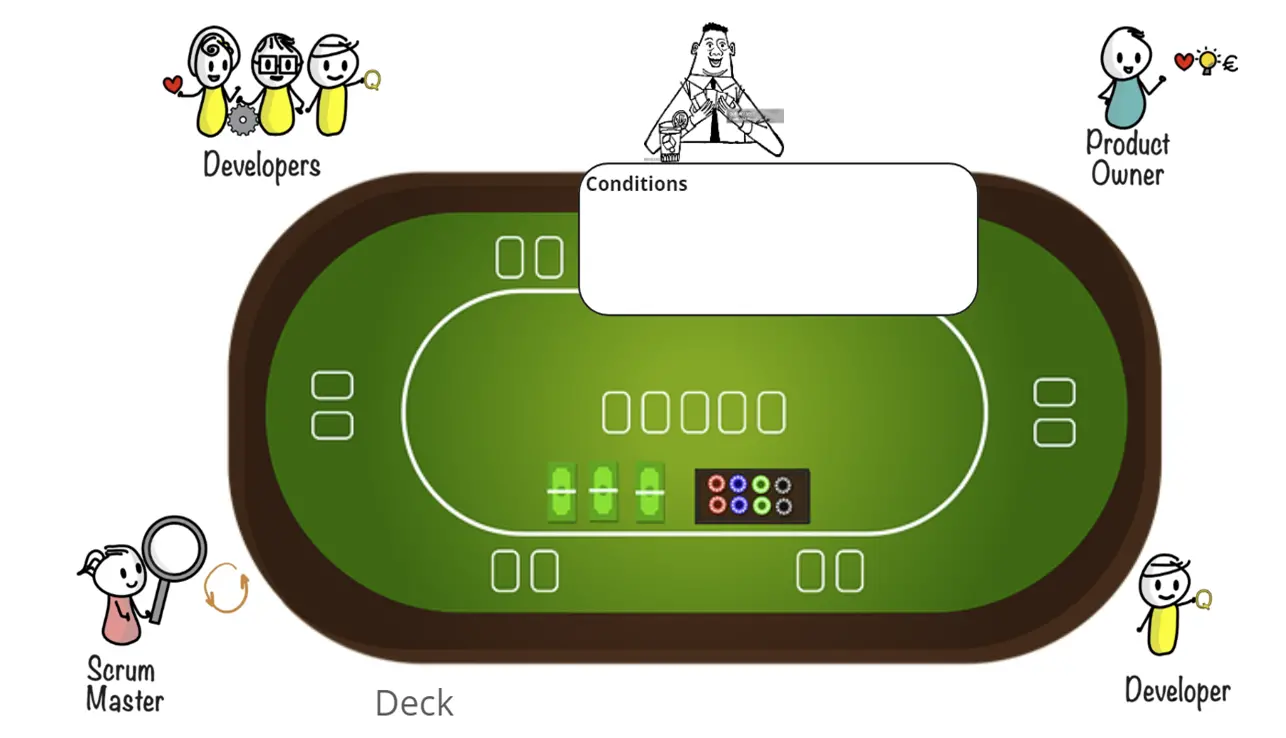Pokemon Journey
Welcome to the Pokemon Journey Retrospective board! This lively and colorful board is designed to help Scrum Masters, Agile Coaches, and Facilitators facilitate engaging retrospectives with their teams. Let's take a playful tour of the contents and workflow of this board.
To get started on this board, teams can create their Pokemon trainer avatars using the provided prompt. Once created, they can remove the background and place their avatars at the "Starter Select" area. From there, they can work their way through the various discussion prompts, record their thoughts and ideas, and create actions or experiments for the next sprint.
At the top left corner, we have the "How did we feel starting this sprint?" prompt. It encourages teams to reflect on their emotions and set the tone for the retrospective. Right next to it is the "STARTER SELECT" area, where team members can place their trainer avatars to kick off the session.
Moving clockwise, we come across various discussion prompts represented by Pokemon-themed areas. For example, we have the "Where were we flying high this time?" area, symbolized by Pidgeot soaring in the sky. Here, teams can celebrate their successes and identify what went well during the sprint.
Next, we encounter the "Zubat's Cave" , which represents the obstacles and challenges faced by the team. Teams can discuss the things that slowed them down or annoyed them during the sprint.
Continuing our journey, we reach the "Evolution Stones" area, where teams can explore areas for improvement and discuss how things can change for the better. This is an opportunity to brainstorm ideas for growth and evolution.
In the "Mewtwo's Incubator" area, teams can explore new technologies and skills they want to leverage in future sprints. It's a chance to think outside the box and consider innovative approaches.
As we move further, we encounter the "Gym Badges" area, where teams can proudly showcase their major achievements from the sprint. It's like a trophy case for their accomplishments.
The "Pokemon Centre" represents the need for rest and recovery. Here, teams can identify areas that require a recharge or address any lingering technical debt.
Beware of the "Ghost Tower", where teams can share any surprises or unexpected challenges they encountered during the sprint. It's a spooky reminder to be prepared for the unexpected.
Reaching the "Mountain Zenith", teams can dream big and set ambitious goals. They can imagine what they would shoot for if failure was not an option.
Just like fishing for Magikarp, sometimes tasks bring unexpectedly significant results or learnings. The "Fishing for Magikarp" area allows teams to reflect on such tasks and capture the valuable insights gained.
In the "Pokemart Shopping" area, teams can let their imagination run wild. If money and time were no object, what resources or tools would they bring in to increase their impact?
Teams can find a moment of respite at the "Camping Spot". Here, they can identify areas where they need to take a break and evaluate the sustainability of their current working pace.
The "Changing Types" area prompts teams to assess changes in their environment. They can identify opportunities to leverage and potential risks to mitigate.
Teams can tackle bugs and defects in the "Viridian Forest Bugs" area. They can discuss new approaches or strategies to improve their bug-fixing process.
Preparing for bigger challenges is crucial, just like facing Gym Leaders. The "Preparing for the Elite" area encourages teams to strategize and develop plans for upcoming challenges.
Looking ahead, the "Safari Zone Opportunities" area invites teams to explore new opportunities for the next sprint. They can brainstorm strategies to effectively capture these opportunities.
Team morale is essential, and the "Pokemon on the Beach" area reminds teams to focus on building a positive and rewarding team culture. They can reflect on ways to improve team morale.
Finally, teams can rate the retrospective session by placing their avatars on the "Rate the Retro" section. This feedback helps improve future retrospectives and ensures continuous improvement.
So, fellow Miro users, Scrum Masters, Agile Coaches, and Facilitators, dive into this Pokemon-themed retrospective board and embark on a fun and productive journey with your teams!
Categories
Similar templates





